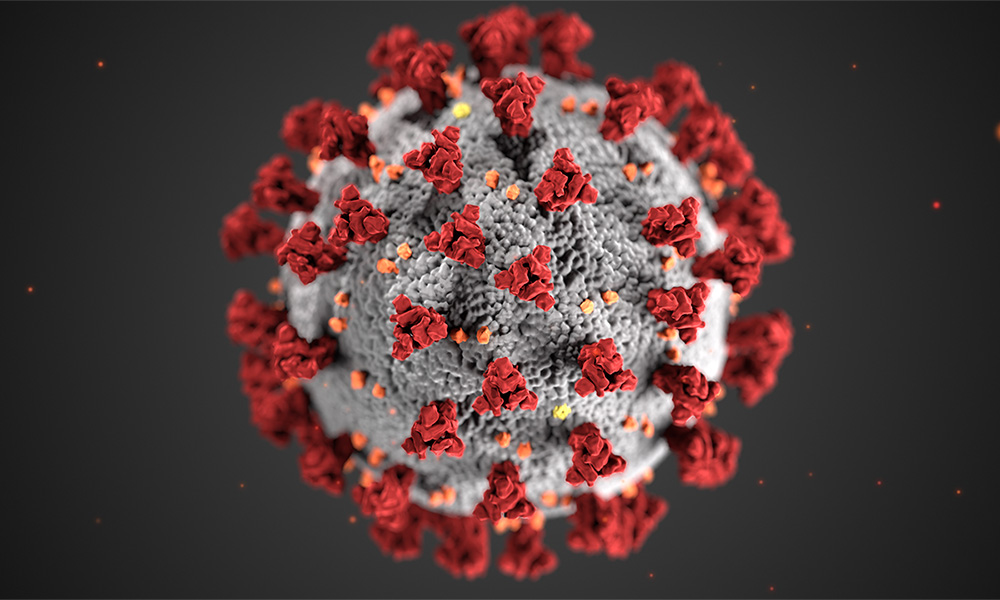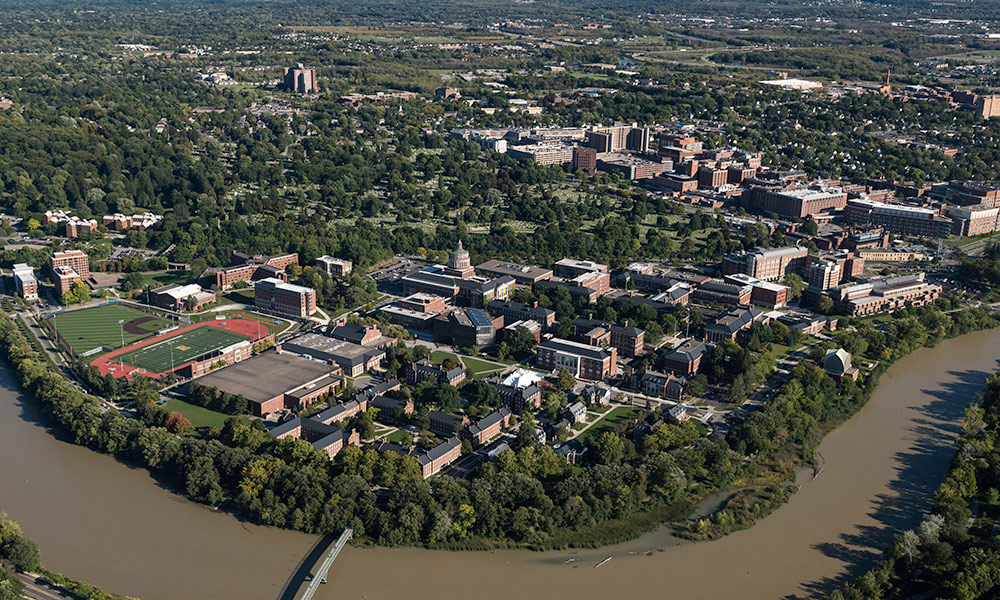In an effort to protect students living on campus from COVID-19, the University of Rochester has taken proactive steps to provide separate living spaces for undergraduates who have to remain in residential halls so that they’re less likely to come into contact with coronavirus.
The readiness plan also includes freeing up living areas that may be used for quarantine and isolation areas so that students who need that level of care can receive it.
Coronavirus update
The University’s website is a way to find guidance and critical information during a rapidly changing situation.
COVID-19 symptoms or exposure?
Find out what to do if you or a close contact have symptoms or think you may have been exposed.
“What we’re trying to achieve with the students who remain on campus is further social distancing,” says Jane Gatewood, vice provost for global engagement and cochair of CURT (Coronavirus University Response Team). “The first phase was putting all students in single rooms, to further de-densify them. Phase two was securing quarantine and isolation areas so we are prepared if we find the disease has spread to the residential population.”
Gatewood and Mark Cavanaugh, chief safety officer and director of Environmental Health & Safety, since early February have cochaired the CURT, which helps coordinate COVID-19 planning and responses, including an operations subgroup that has helped lead these kind of residential adjustments.
In response to the coronavirus pandemic, the University went to remote learning for all classes on March 23. Students who were allowed to remain on campus included those who had difficulty returning to their home country and those with serious challenges that prohibited them from leaving.
There are 815 undergraduates living on the River Campus, from an original total of 4,277 who were living there at the start of the spring semester. Of the 342 who started the semester living on the Eastman School of Music campus, only 25 remain and all are in single rooms.
On March 23, 32 students moved from Wilder Tower to nearby Anderson Tower. More were relocated over the weekend as 32 were moved from doubles to singles (almost all of them in the same residence hall), and 67 students in Hill Court were relocated to apartments in de Kiewiet and Valentine towers. Each student is in a single room within an apartment.
“We regret the disruption, but it is the only way we can be prepared to provide support if there is a large number of ill students who have COVID-19,” says Ralph Manchester, director of the University Health Service.
The moves are needed to prepare campus spaces to best serve the needs of students and help slow the spread of the virus as the pandemic progresses. That includes preparing:
- quarantine spaces for students who have been exposed to a known case of COVID-19 and;
- isolation spaces for students who have COVID-19 illness, those who are ill and waiting for a COVID-19 test result, and those who are ill but can’t be tested.
Wilder and Hill Court have been converted to quarantine and isolation spaces. UHS is preparing to provide infirmary care to students who are in isolation in Wilder.
University Facilities and Services worked throughout the weekend to help relocate undergraduates, providing boxes and other essential items, and cleaning rooms before students moved in.
Manchester says it’s essential that students remain vigilant and practice social distancing.
“COVID-19 is a serious illness that can affect people of any age,” he says. “The virus spreads from one person to another when people are in close proximity.”
Manchester says the number of cases in the Rochester area doubles every three days. Since there is no treatment or vaccine, the only way to control the infection is to reduce the amount of contact between individuals.
“Students who share a room are at increased risk of transmitting the infection to each other. If one becomes ill, that student will have to move to an isolation housing unit, in a different building, for a week or probably longer. The roommate of the infected person will have to move to a quarantine housing unit, in a different building, for 14 days, and the roommate has a significant chance of becoming infected.”
Manchester says the potential exists that, by mid-April, the University could be dealing with “dozens of new cases of COVID-19 among students every day, all area hospitals operating at 200 percent of their normal capacity and more critically ill patients than ICU beds. Relocating the students to single rooms and preparing quarantine and isolation areas are crucial moves to avoid this worst-case scenario.”
Read more

Rochester economist: ‘Congress will have to do more’ to fight recession
The $2 trillion stimulus plan working its way through Congress likely won’t be adequate to save the US economy from recession in the face of the coronavirus pandemic, says Rochester economist Narayana Kocherlakota.

‘Make every effort to connect—digitally—with other people’
How best to handle the psychology of social distancing? Two Rochester psychologists offer ideas.

How do you slow a pandemic?
A University of Rochester health policy expert, physician, and historian, says implementing a modern understanding of epidemiology is key to dealing effectively with pandemics like coronavirus.





